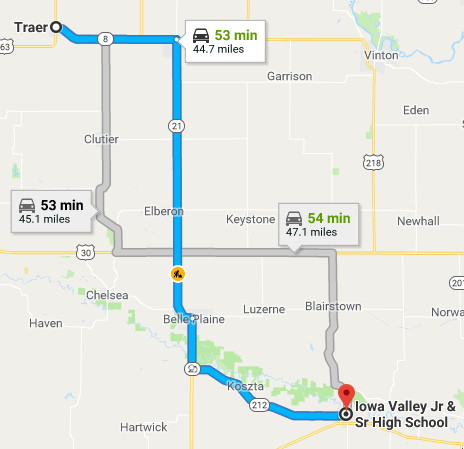Part of a series.
In my previous posts about my creation of a school directions booklet and the issues I have encountered updating it, I’ve danced around the elephant in the room. And that is the fact that in the late 2010s, nearly anyone over the age of 13 can bypass years of work and map-reading in seconds — not just from their home, but on the way to the game.

From Pew: Roughly three-quarters of Americans (77%) now own a smartphone, with lower-income Americans and those ages 50 and older exhibiting a sharp uptick in ownership over the past year, according a Pew Research Center survey conducted in November 2016. … Smartphones are nearly ubiquitous among younger adults, with 92% of 18- to 29-year-olds owning one.
Barring a robot uprising or China launching an EMP, how do I go up against “Hey, Siri”? (Cell phones upended The Baby-Sitters’ Club, but Encyclopedia Brown didn’t emerge unscathed either.) The ubiquity of the Internet, above all else, is what has made me rethink the future of this project.
Now, is that a perfect replacement? No. There are still places where athletic facilities are not where the schools are, and I consider that a strong point of the booklet. But on the other hand, now that the websites of many schools and/or their conferences have calendars that say where the event is, it’s a simple step to enter that in a search field or look at the town on satellite view.
Am I overstating my obsolescence in this situation? Maybe. Over the course of writing this, some assertions changed into softer statements.
So I’m back at the choices I had at the start of this musing: Continue things as-is as long as what I have keeps working, retool the whole thing, or bow to the flow of time. At least, until someone goes looking for Colo-NESCO’s softball diamond and ends up in the wrong town.
